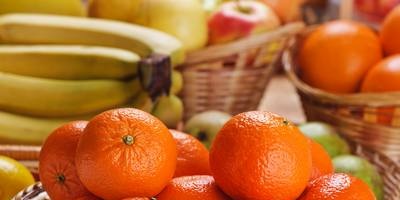|
 Why do we get sick and old? Unfortunately, scientists are not yet able to give a succinct unambiguous answer to this short question. Many factors cause the development of pathologies, and an important role in the destruction of our cells and tissues is played by unstable and highly active particles called free radicals, which are constantly formed and accumulate in the body and attack normal full-fledged molecules. Why do we get sick and old? Unfortunately, scientists are not yet able to give a succinct unambiguous answer to this short question. Many factors cause the development of pathologies, and an important role in the destruction of our cells and tissues is played by unstable and highly active particles called free radicals, which are constantly formed and accumulate in the body and attack normal full-fledged molecules.
Under the influence of free radicals, the membrane structures of cells are damaged, and, as a result, such pathological conditions as cancer, phlebitis, arthritis, cataracts, asthma, depression, Alzheimer's disease, atherosclerosis, Parkinson's disease, premature aging and many others develop.
How to deal with free radicals? Fortunately, nature itself lends us a friendly helping hand, offering a huge number of products containing substances that can effectively fight oxidation processes that are initiated by free radicals. These compounds are called antioxidants. Antioxidant substances include:
Vitamins
- Vitamin C is one of the strongest antioxidants. Rosehip, sea buckthorn, black currant, strawberry, citrus fruits are rich in ascorbic acid, spinach, bell pepper, kiwi, sauerkraut, tomatoes.
- Vitamin E prevents the oxidation of fatty acids in cell membranes. It is found in meat, oily fish, milk, liver, nuts (walnuts, peanuts, hazelnuts, almonds), in vegetable oils and butter, in green parts of plants, in legumes, in germ of cereals.
- Vitamin A (in the form of retinol and carotene) prevents the development of cataracts and premature aging of the skin. Retinol is rich in foods such as fish oil, liver, cheese, butter, milk, caviar, egg yolk. Carotenoids (precursors of vitamin A) are found in large amounts in brightly colored parts of fruits and vegetables: carrots, red peppers, dried apricots, pumpkin, melon, apricots, grapes.
 Minerals Minerals
- Copper is a component of many enzymes responsible for the normalization of cellular metabolism. Dietary sources of copper are mushrooms, nuts, seeds, whole grains, and liver.
- Manganese protects fatty acids from oxidation. Found in brown rice, nuts, whole grains, and legumes.
- Selenium protects biological membranes from the damaging effects of free radicals. Sources of selenium include mushrooms, meat, garlic, nuts, liver, fish and seafood, legumes, whole grains, seaweed.
- Zinc protects DNA and RNA from free radical damage. Sources of zinc include poultry, meat, seafood, dairy products, eggs, wheat germ, nuts, whole grains, and mushrooms.
Green tea and dry red wine are excellent sources of antioxidants and good mood, but these foods should not be overused either. In addition to natural food sources, the antioxidants needed by the body can be obtained by introducing multivitamins prescribed by your doctor into your diet.
However, do not forget that these are medications, so the dosage must be strictly adhered to. In addition, it is much more pleasant to eat a handful of berries or nuts than to drink pills, which we associate with ill-being and disease.
Katty
|
 Why do we get sick and old? Unfortunately, scientists are not yet able to give a succinct unambiguous answer to this short question. Many factors cause the development of pathologies, and an important role in the destruction of our cells and tissues is played by unstable and highly active particles called free radicals, which are constantly formed and accumulate in the body and attack normal full-fledged molecules.
Why do we get sick and old? Unfortunately, scientists are not yet able to give a succinct unambiguous answer to this short question. Many factors cause the development of pathologies, and an important role in the destruction of our cells and tissues is played by unstable and highly active particles called free radicals, which are constantly formed and accumulate in the body and attack normal full-fledged molecules.




